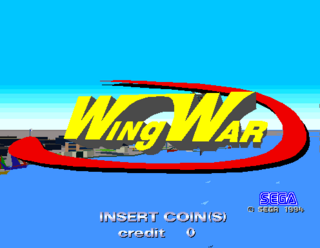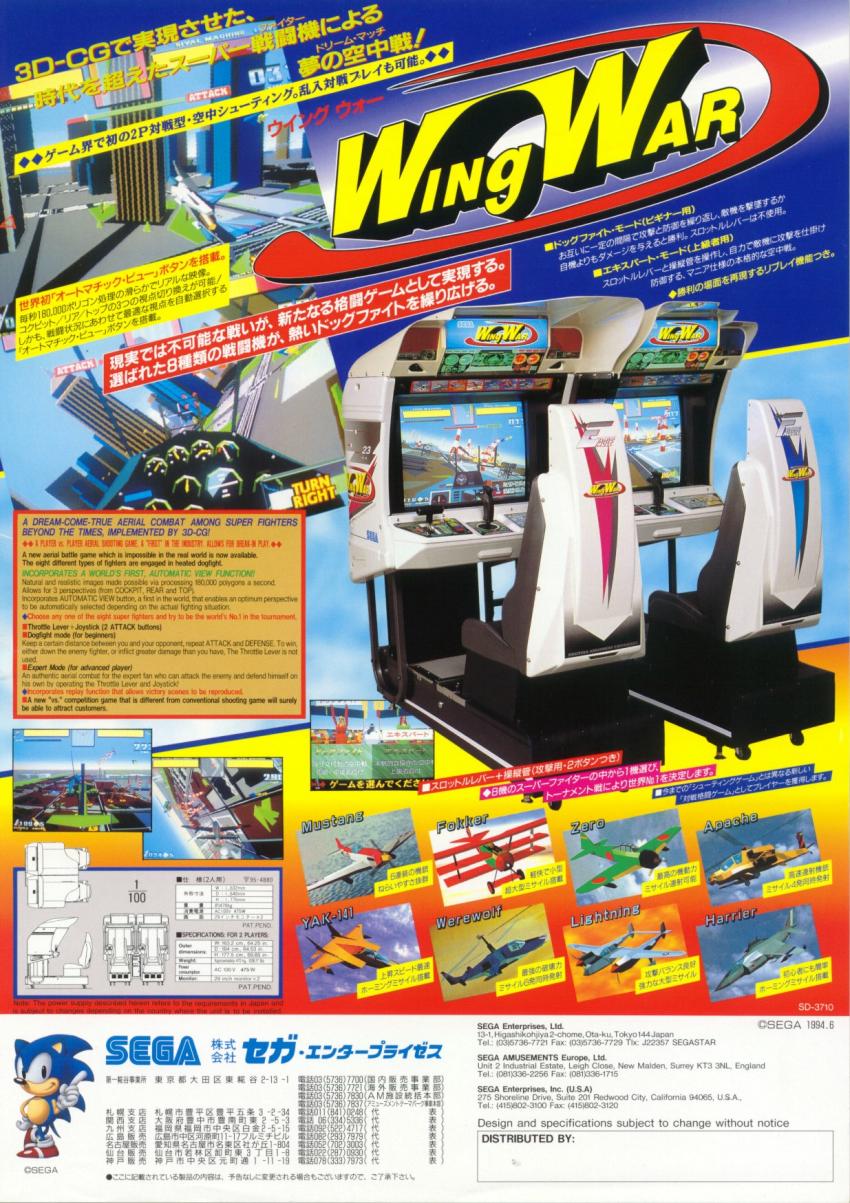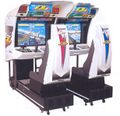Wing War
From Sega Retro
| Wing War | |||||||||||||
|---|---|---|---|---|---|---|---|---|---|---|---|---|---|
| System(s): Sega Model 1 | |||||||||||||
| Publisher: Sega | |||||||||||||
| Developer: Sega AM1[1] | |||||||||||||
| Genre: Action | |||||||||||||
| Number of players: 1-2 | |||||||||||||
|
This short article is in need of work. You can help Sega Retro by adding to it.
Wing War (ウイングウォー) is a Sega Model 1 arcade combat flight simulator game developed by Sega AM1 and manufactured by Sega. Released exclusively to Japanese and American arcades in 1994, the game puts players in the cockpit of a variety of both historic and modern aircraft and pits them in an aerial dogfight with a second rival aircraft.
As the final game developed for the aging Model 1 arcade architecture, Wing War was due to receive a port to the 32-bit hardware sometime around 1995.[2] However, the system's poor sales reportedly caused the port's cancellation - leaving it as the only one of Sega's Model 1 games not to receive a home port. However, the game did receive an updated version enabling compatibility with R360 hardware.
Contents
Gameplay
Wing War takes advantange of the Model 1 board to present a 3D aircraft fighting game. The player selects on of eight aircraft, competing against the other seven in a tournament.
The game has two modes; "Dogfight", where both vehicles continously travel forwards and take it in turns to try and hit each another (in a similar style to After Burner, albeit with missiles coming from behind) and "Expert", which takes the form of a full 360 air combat game.
While each aircraft is equipped with different weapons, all can gain missiles which can be targeted at opponents, and smoke as a means of defending yourself. The fight finishes either when a craft is blown up, or the time runs out (being similar to fighting games, where the player with the most health at the end is declared the winner).
Wing War plays fast and loose with real world physics in the name of entertainment. Hitting the ground or obstacles merely causes the player to take damage, and despite showcasing many decades-worth of aviation technology, even the oldest planes can withstand heavy firepower before exploding.
After the tournament is complete (which only involves the player winning three matches), they will go up against a UFO over Tokyo (and more specifically an area above and including Sega's then-Japanese headquarters).
Aircraft
| The Fokker Dr.I is piloted by perhaps the closest Sega could get to Manfred von Richthofen, otherwise known as the "Red Baron". "Max" likely comes from the Pour le Mérite (also known as the "Blue Max"), awarded to von Richthofen for his services in World War I. | |
| The Yakovlev Yak-141 | |
| The Hawker Siddeley Harrier. | |
| The Kamov Ka-50. | |
| The AH-64 Apache. | |
| The Mitsubishi A6M Zero. | |
| The P-51 Mustang | |
| The Lockheed P-38 Lightning. | |
| UFO | |
History
A 32X version was reportedly in development for a planned 1995 release, but ultimately never made it to store shelves.[2] Sega Logistics Service announced it would end service on the Wing War arcade machines on March 31, 2017.[3][4]
Production credits
- Main article: Wing War/Production credits.
Magazine articles
- Main article: Wing War/Magazine articles.
Promotional material
Artwork
Photo gallery
Physical scans
| Sega Retro Average | |||||||||||||||||||
|---|---|---|---|---|---|---|---|---|---|---|---|---|---|---|---|---|---|---|---|
|
| 70 | |
|---|---|
| Based on 3 reviews | |
| Model 1, US | ||||
|---|---|---|---|---|
| Model 1, JP | ||||
|---|---|---|---|---|
References
- ↑ 1.0 1.1 Sega Arcade History, Enterbrain, page 132
- ↑ 2.0 2.1 Game Players, "Vol. 7 No. 12 December 1994" (US; 1994-1x-xx), page 22
- ↑ File:SegaProductsTerminationAnnouncement 2016-11 JP.pdf
- ↑ File:SegaProductsTerminationAnnouncement 2016-12.pdf
- ↑ Games World: The Magazine, "December 1994" (UK; 1994-10-28), page 23
- ↑ Sega Pro, "October 1994" (UK; 1994-09-08), page 9
- ↑ Strana Igr, "Mart 1996" (RU; 1996-xx-xx), page 104




